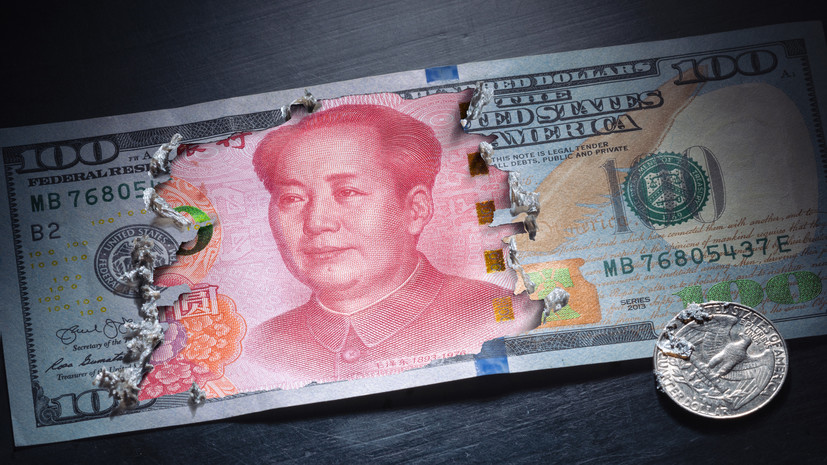China's investment in U.S. government bonds (treasuries) has fallen to a record low over the past 13 years. This is evidenced by the latest data from the US Department of the Treasury.
According to the materials of the department, in May 2023, the PRC reduced investments in US Treasury securities by $22.2 billion to $846.7 billion, the last time a similar value could be observed in June 2010.
Note that the treasuries of the US Treasury are debt obligations, the payment of which is guaranteed by the US government. Various companies, governments and private investors purchase these securities at a certain cost and subsequently receive a stable income on them in the form of interest. In other words, holders of government bonds lend their money to the economy of the United States.
In addition to China, the main creditors at the moment are Japan (the country holds about $1.09 trillion in treasuries), the United Kingdom ($666.6 billion), Belgium ($335.5 billion), Luxembourg ($333.9 billion) and Switzerland ($304.4 billion).
It is noteworthy that back in 2018, Beijing invested more than $ 1.1 trillion in US debt securities and was at that time the largest holder of US government debt. However, in 2019, Japan overtook China in terms of investments in assets. Then China began to withdraw funds from the US economy against the backdrop of the unfolding trade confrontation with the United States.
Then the parties managed to resolve the conflict and for two years the Asian republic still held from $1 trillion to $1.1 trillion of its reserves in treasuries, but in 2022 the situation began to change again. According to the US Treasury, the volume of American treasuries in Beijing's hands systematically decreased until March 2023, then the PRC slightly increased investments for two months, and in May the indicator began to fall again.
"Judging by the dynamics of the volume of investments, the current sales policy is directly determined by the monetary policy of the country's Federal Reserve. The economic sense of selling US government debt in May is the expectation of investors to raise rates in the United States, "explained Evgeny Mironyuk, an expert on the stock market at BCS World of Investments, to RT.
In the spring of 2022, the US Federal Reserve began to confidently tighten monetary policy to combat rising consumer prices in the country. From March 2022 to May 2023, the US regulator raised its rate ten times in a row (from 0-0.25 to 5-5.25%) and brought it to the highest level in the last 16 years. Then, during the last meeting in mid-June of this year, the Fed leadership decided to take a break and keep the rate at the current level of 5.25%.
Traditionally, a rate hike is one of the main measures in curbing inflation risks. As a result of the increase in the rate, the cost of borrowed funds for businesses and the population increases. Against this background, enterprises and citizens are beginning to abandon credit money, which leads to a weakening of economic activity, but puts pressure on prices. At the same time, due to the actions of the regulator, interest on new treasuries is growing, and the value of previously purchased securities is decreasing, Roman Lukyanchikov, an analyst at Freedom Finance Global, explained in an interview with RT.
"At a time when the value of US government bonds is expected to fall further, China has decided to get rid of some of the positions held. China adheres to a balanced strategy of diversifying its reserves. The political factor is also present: Beijing does not exclude the possibility of freezing its investments by the American authorities, "the analyst added.
Sanctions boomerang
After the start of a special military operation in Ukraine, the United States, the EU and other allies have already imposed more than 13,8 thousand different restrictions against Moscow. The restrictions affected the energy industry, trade, automotive, aviation and the banking sector.
It is curious that even before the imposition of an unprecedented number of sanctions, Russia practically nullified its investments in the US national debt. So, at the end of 2017, Moscow held more than $102 billion in assets, while in March 2022 the figure was only about $2 billion.
- Gettyimages.ru
- © mirza kadic
However, the West, and above all the EU countries, managed to block about $300 billion of Russia's gold and foreign exchange reserves. At the same time, by their actions, the European authorities forced a large number of countries to think about the expediency of storing their funds in dollars and euros. This point of view was expressed in an exclusive interview with RT by Finance Minister Anton Siluanov.
"As a result, the share of these assets in the reserves of a number of states began to decline. Confidence in such units of account as the dollar and the euro has been undermined, because the issuing countries of these currencies manipulate them, not only printing in unlimited volumes, but also using them as a lever of pressure in foreign policy issues," the minister stressed.
During the summer, the withdrawal of money from US securities will accelerate and expand geographically, predicts Yevgeny Mironyuk. According to him, the outflow of funds reflects the lack of interest from foreign investors in US Treasury bills. In turn, the lack of borrowed funds risks turning into a new round of crisis in the banking sector for America, the analyst added.
"The withdrawal of funds from treasuries increases the rate of the US national debt, which makes its servicing more expensive for the American authorities. As a result, this leads to an increase in the country's budget deficit, which may require the emission of a new money supply, which only increases pro-inflationary pressure," Lukyanchikov concluded.

